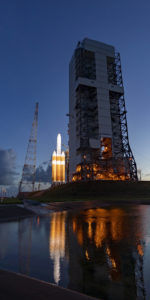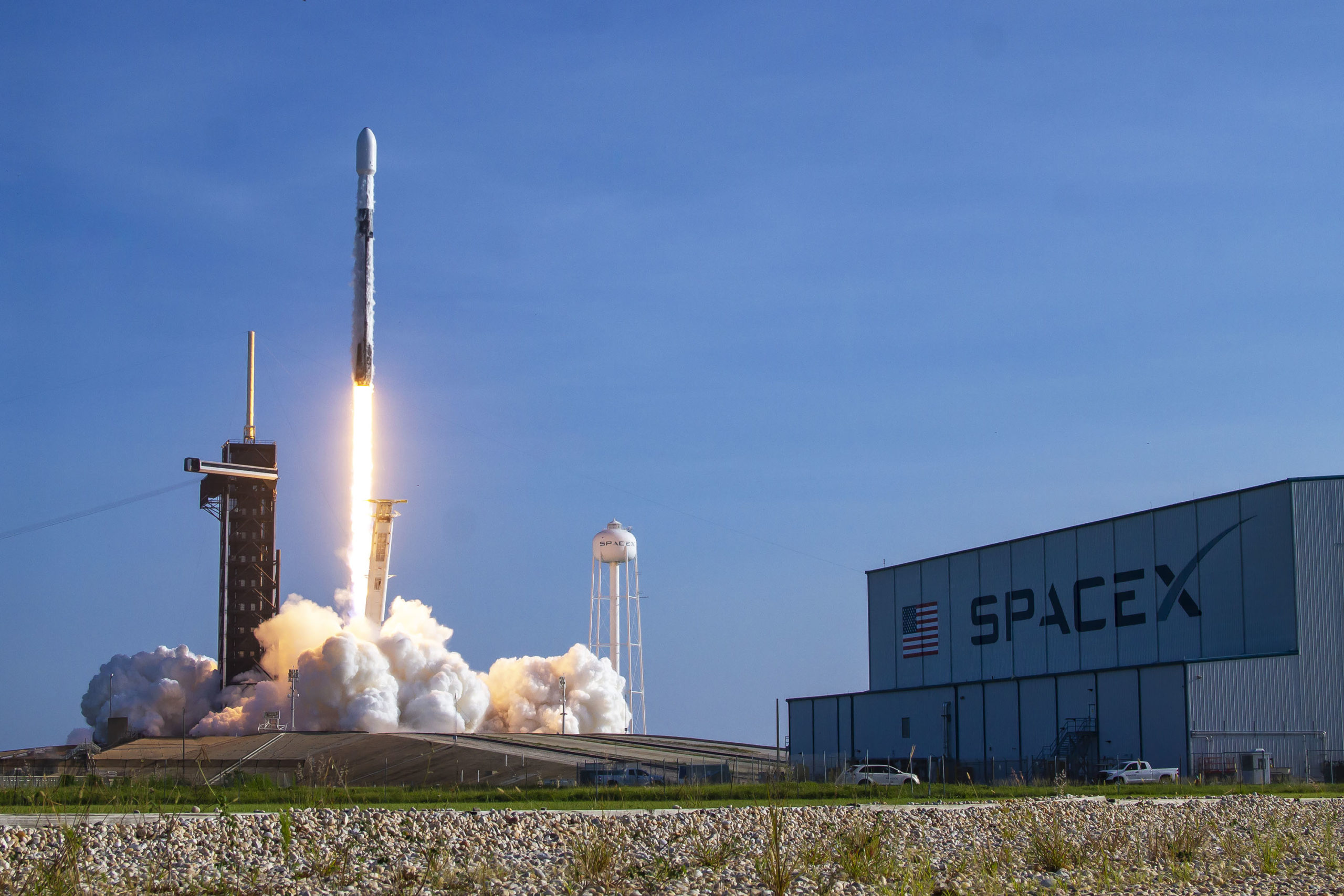
SpaceX has set a new record earlier today (Thursday, 3 September), by launching a pair of Falcon 9 boosters from the same coastline within four days of one another. Having missed out on the chance to fly twice inside nine hours on Sunday—thanks to the intractable Florida weather—the veteran B1060 core was instead trundled out to historic Pad 39A at the Kennedy Space Center (KSC) in Florida for another try on Tuesday, which was later moved to Thursday.
SpaceX’s 16th mission of 2020 roared aloft at 8:46 a.m. EDT Thursday to deliver another batch of 60 Starlink low-orbiting internet communications satellites aloft. Less than nine minutes after leaving the Space Coast, B1060 powered smoothly back through the low atmosphere and alighted on the deck of the Autonomous Spaceport Drone Ship (ASDS), “Of Course I Still Love You”, situated offshore in the Atlantic Ocean.
Thursday’s liftoff was originally meant to be part of a record-breaking “double-header” weekend, unexpectedly made possible by Saturday morning’s last-second scrub of a United Launch Alliance (ULA) Delta IV Heavy. Laden with the highly secretive NROL-44 payload for the National Reconnaissance Office (rumored to be an Advanced Orion/Mentor signals-intelligence satellite), the mission had already suffered two days of delay due to a ground pneumatics control system issue which required attention.
Then, on Saturday, a scrub was dramatically called by the on-board safety systems at T-3 seconds, requiring at least a week to reconfigure the 235-foot-tall (72-meter) Delta IV Heavy for another launch attempt. This gave SpaceX ample availability on the Eastern Range to launch not one, but two Falcon 9s within a nine-hour period on Sunday.
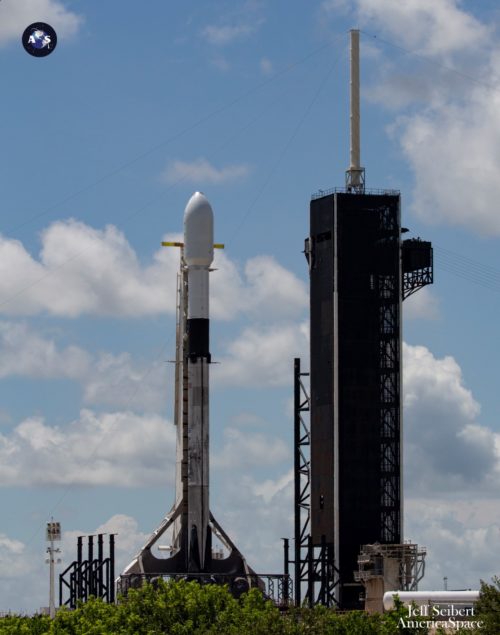
But it was not to be. Poor weather quickly forced SpaceX to scrub the planned 10:12 a.m. EDT Sunday launch of its previously-flown B1060 core with 60 Starlinks and reschedule for Tuesday. “Standing down from today’s launch of Starlink due to inclement weather during pre-flight operations,” SpaceX tweeted on Sunday morning. “Next launch opportunity is Tuesday, 1 September at 9:29 a.m. EDT, pending Range acceptance.”
Yet against many odds, and for most of Sunday with only a fifty-fifty chance that the weather gods would unify by launch time, SAOCOM-1B speared for the heavens on the cusp of sunset at 7:18 p.m. EDT. It was SpaceX’s 15th launch of 2020 and its first-ever polar-inclination mission to originate from the East Coast of the United States.
Although a nine-hour interval between missions would have been truly spectacular, even flying again only 38 hours later at 9:29 a.m. EDT Tuesday SpaceX might have set a new personal-best for the shortest gap between two Falcon 9 launches. The current record is a little under 48 hours, set between the SSO-A SmallSat Express and the CRS-16 Dragon cargo missions—the first from Vandenberg Air Force Base, Calif., the second from Cape Canaveral Air Force Station, Fla.—back in December 2018. But despite their close temporal proximity, those two missions occurred on opposite sides of the United States, whereas SAOCOM-1B and Starlink were both set to fly from the Space Coast.
In any case, a 38-hour record did not transpire, for on Monday evening SpaceX announced that Starlink would slip to 8:46 a.m. EDT Thursday. “Team is using additional time for data review,” SpaceX explained via Twitter. However, even a Thursday morning launch still established a new record of three days, 13 hours and 28 minutes between Falcon 9 flights from Florida. This neatly eclipses the four days which elapsed between the flights of Dragon Endeavour from Pad 39A on 30 May and a batch of Starlinks from SLC-40 on 4 June.
It has been a quickfire two months for B1060, which scored its first orbital launch on 30 June when it delivered the third Block III Global Positioning System (GPS) navigation and timing satellite into Medium Earth Orbit (MEO), at an altitude of 12,550 miles (20,200 km) on behalf of the U.S. Space Force. The blackened and scorched core stage returned to a smooth touchdown on the ASDS “Just Read the Instructions”, newly reassigned to support East Coast recovery operations earlier this summer, having previously played host to seven returning Falcon 9 mission cores off the California coastline between January 2017 and January 2019.
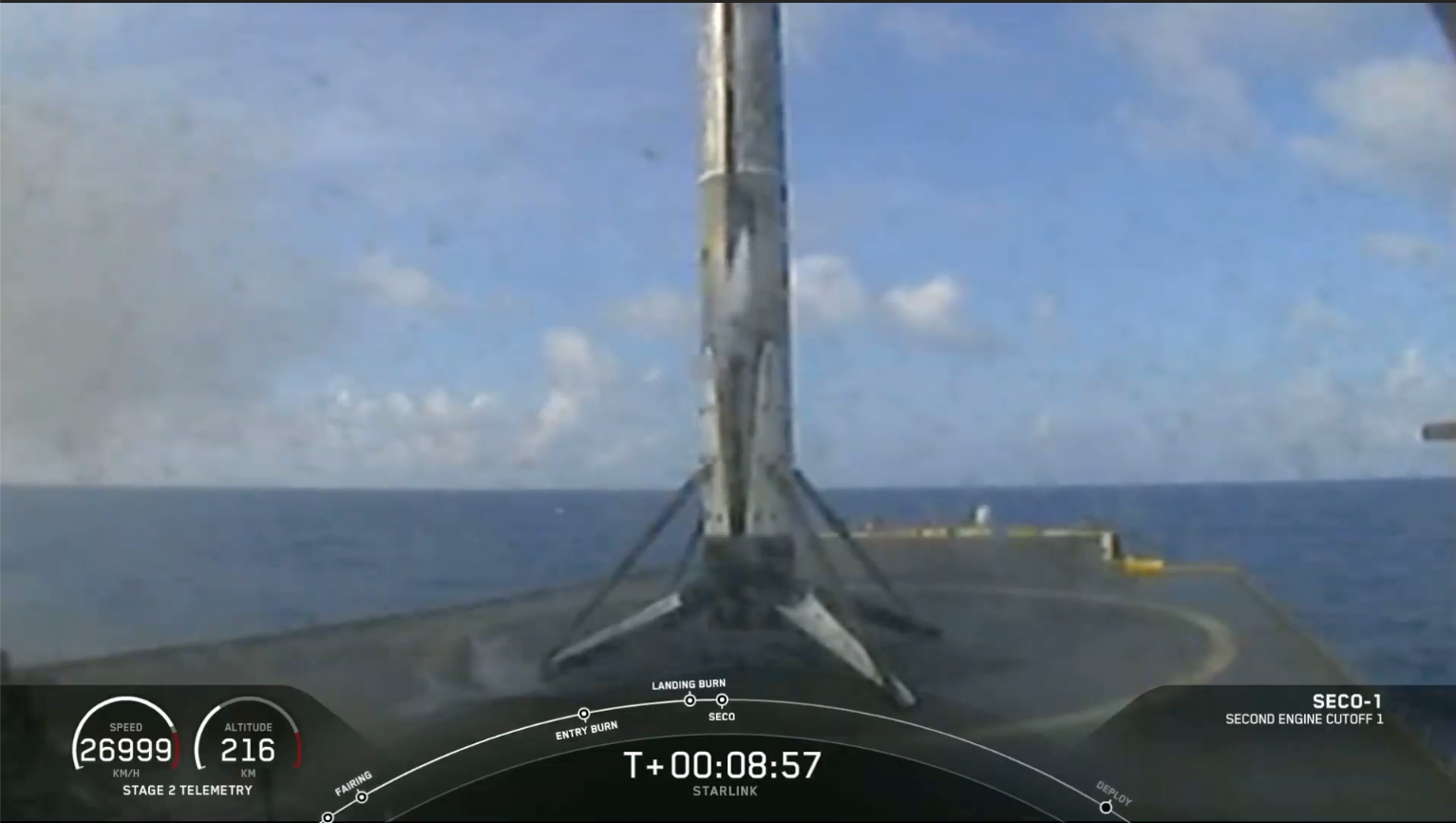
Following its safe recovery, B1060 returned to Port Canaveral on 4 July, presenting a impressive Independence Day spectacle for observers. Its landing legs were retracted and the core re-entered processing for its next mission, a mere eight weeks later. It was rolled out of the Horizontal Integration Facility (HIF) at Pad 39A late Saturday, ahead of its original targeted launch attempt on Sunday, but remained in a horizontal position throughout the weekend. The 230-foot-tall (70-meter) stack was eventually raised to the vertical in the pre-dawn darkness on Monday morning.
Weather conditions were predicted at 80-percent-favorable Thursday, deteriorating slightly to 70 percent in the event of a 24-hour scrub to Friday. “Guidance is in good agreement the subtropical ridge axis has begun to move north,” noted the 45th Weather Squadron at Patrick Air Force Base in its L-1 briefing, issued Wednesday. “This weakens the offshore flow and lowers the afternoon and evening storm chances along the coastal areas.” With the ridge axis predicted to be almost directly over the Spaceport by Thursday, the principal concern was a violation of the Cumulus Cloud Rule associated with the onset of the sea breeze before it moved inland.
Launch occurred on time at 8:46 a.m. EDT Thursday and B1060 powered smoothly into the crisp morning sky, returning less than nine minutes later to alight on the ASDS deck, some 390 miles (630 km) downrange of the Cape. It was the 40th time that a Falcon 9 core had successfully landed on a drone ship—on either the East Coast or the West—since April 2016. Meanwhile, the second stage continued the uphill climb with a six-minute “burn” of its Merlin 1D+ engine to deliver a further 60 Starlinks into low-Earth orbit. Deployment took place a little under 15 minutes after liftoff.
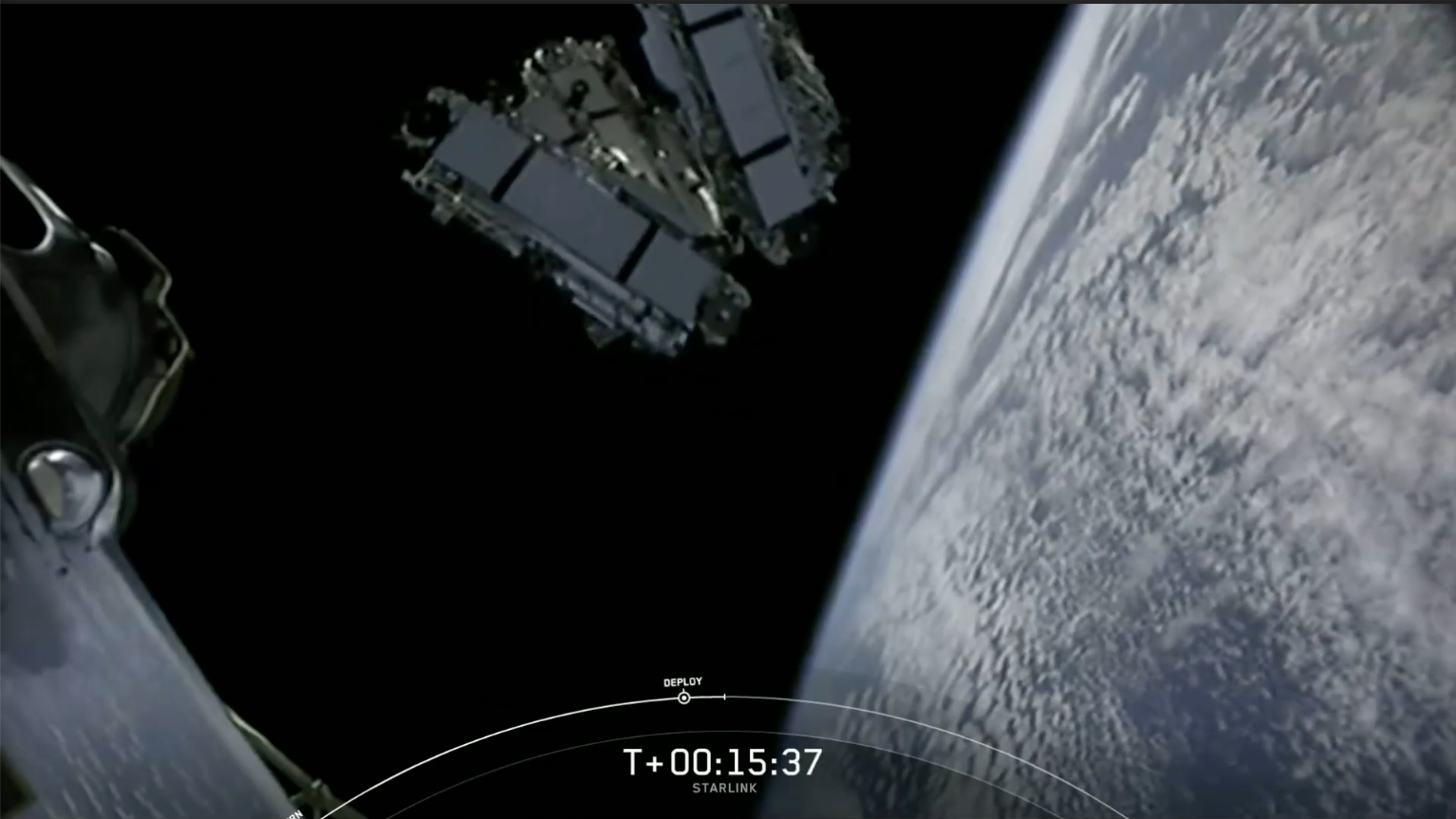
Including this morning’s launch, more than 700 production-design Starlinks have now been orbited since May 2019. In the minutes before launch, SpaceX provided an update on the constellation’s effectiveness. “In initial tests of Starlink, the team has been collecting latency data and performing standard speed tests of the system,” it tweeted. “Results from these tests have shown super low-latency and download speeds greater than 100 mbps: fast enough to stream multiple HD movies at once and still have bandwidth to spare.”
.
.
FOLLOW AmericaSpace on Facebook and Twitter!
.
.





